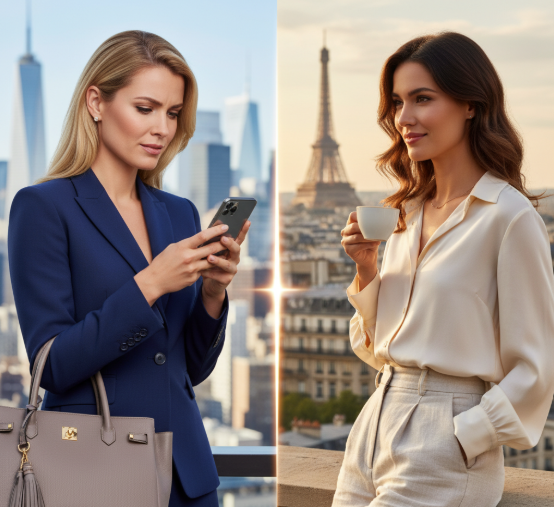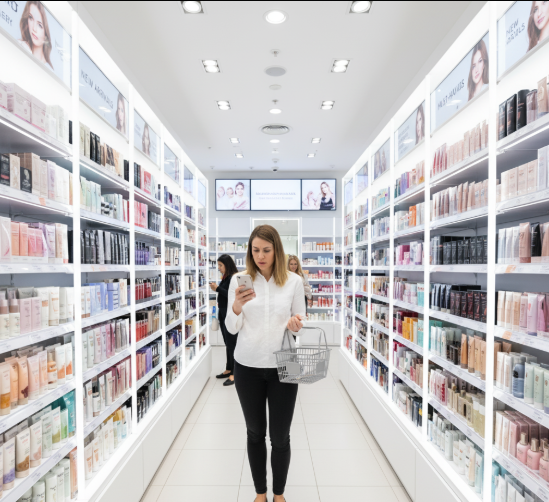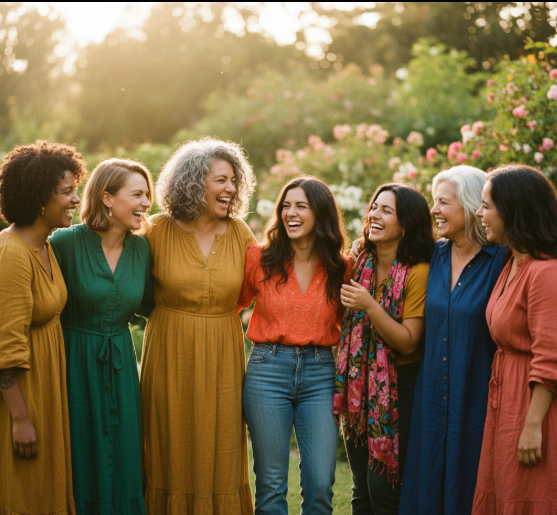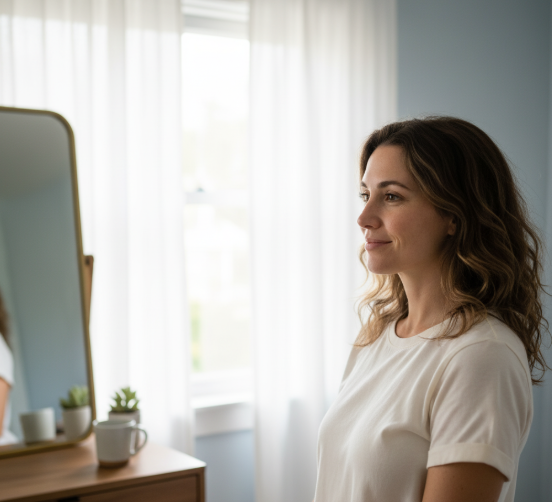
Introduction
Walk into any American beauty store, and you'll immediately notice something striking: rows upon rows of products promising transformation. From contouring kits that promise to reshape your face to serums guaranteeing age-defying results, the message is clear—you need fixing. This stark reality reflects a deeper issue affecting millions of American women who struggle with body image insecurity at rates that significantly exceed their European counterparts. Understanding why this disparity exists requires examining the complex interplay of cultural values, media influence, commercial pressures, and historical beauty standards that shape how women view themselves on both sides of the Atlantic.
The Beauty Industry's Grip on American Culture
The United States leads the world in cosmetic procedure volume and beauty industry spending, creating an environment where appearance modification is normalized and even celebrated. In 2022, the United States registered over 7.4 million cosmetic procedures, the highest number globally. This staggering figure reflects a culture deeply invested in achieving and maintaining specific aesthetic ideals through medical intervention.
The American beauty industry has mastered the art of creating insecurity to drive consumption. Unlike European markets, where beauty marketing often emphasizes enhancement of natural features, American advertising frequently promotes dramatic transformation. This approach sends a powerful message: your natural appearance is insufficient. The industry generates billions of dollars annually by convincing women they need extensive product arsenals and professional interventions to meet beauty standards.
Research indicates that American women face significantly more pressure regarding their appearance. According to body image studies, 60 percent of American women report feeling completely or somewhat pressured to have a particular body type, compared to 42 percent of men. Furthermore, 76 percent of Americans believe women face more pressure than men to conform to specific body types, highlighting the gendered nature of these beauty expectations.

European Approaches to Beauty: Less Is More
European beauty culture operates on fundamentally different principles. The emphasis tends toward natural enhancement rather than transformation. European women typically use minimal makeup—think tinted moisturizer, a single coat of mascara, and subtle lip color—rather than the multi-step, heavily contoured looks popular in America. This philosophy stems from a cultural appreciation for individual features and a belief that beauty should appear effortless.
The European skincare philosophy prioritizes skin health over coverage. Rather than layering heavy foundations and concealers, European women invest in quality skincare routines that improve skin condition from within. This approach reflects a long-term perspective on beauty that contrasts sharply with the quick-fix mentality prevalent in American beauty culture.
European fashion and beauty standards also demonstrate greater diversity and regional variation. While American media tends to promote a relatively homogeneous ideal, European countries maintain distinct aesthetic preferences that reflect local culture and history. This regional variation allows for broader interpretation of what constitutes beauty, potentially reducing the pressure women feel to conform to a single standard.
Social Media's Amplification Effect
Social media has intensified body image concerns globally, but its impact appears particularly pronounced in the United States. The platforms' algorithm-driven content feeds users a constant stream of idealized images, creating unrealistic comparison points. Young Americans spend considerably more time on social media than their European counterparts, increasing their exposure to these carefully curated and often digitally altered images.
Body image distress statistics reveal troubling trends. Research shows that 75 percent of young adults aged 16 to 25 worldwide reported body image distress in 2015, representing a 33 percent increase from 2009. The rapid rise in body image concerns correlates directly with increased social media usage during this period. Body Dysmorphic Disorder diagnoses have also increased, with current estimates suggesting that between 5 to 10 million people in the United States are affected.
Instagram, TikTok, and similar platforms create echo chambers where beauty standards become increasingly narrow and unattainable. The rise of filters and editing tools means that even the images women compare themselves to are often heavily manipulated. This digital distortion creates a beauty standard that doesn't exist in reality, yet millions of women measure themselves against these impossible ideals daily.
Cultural Values and Historical Context
American culture's emphasis on individualism and self-improvement extends into the realm of physical appearance. The belief that anyone can achieve anything through hard work translates into the notion that achieving the ideal body is simply a matter of sufficient effort and investment. This perspective places responsibility—and blame—squarely on individual women for their appearance, ignoring genetic diversity and natural variation.
The American Dream narrative of transformation and reinvention applies to physical appearance as much as socioeconomic status. This cultural framework makes cosmetic enhancement morally neutral or even admirable, while European cultures often view such interventions with more skepticism. The European emphasis on acceptance and working within natural constraints contrasts with the American belief in unlimited self-modification.
Historical beauty standards in America have long promoted Eurocentric features—pale skin, light eyes, slim figures, thin noses and lips—as the ideal. This narrow definition has created particularly acute insecurity among women of color, who face pressure to conform to standards that don't reflect their natural features. While European countries certainly have their own issues with Eurocentrism, the multicultural nature of American society creates unique tensions when a single, ethnically specific beauty standard dominates.

The Commercial Pressure Cooker
American capitalism has perfected the art of commodifying insecurity. The beauty and wellness industry has created an endless cycle of problems and solutions, where new insecurities are manufactured to sell new products. From cellulite to arm flab to hip dips, the industry continuously identifies normal body features and frames them as flaws requiring correction.
The scale of commercial influence in America dwarfs that in Europe. American women encounter beauty advertising constantly—on television, in magazines, on billboards, through influencer partnerships, and in targeted social media ads. This relentless messaging creates an environment where appearance anxiety is constantly activated and reinforced. The sheer volume of beauty-related commerce in American culture normalizes excessive focus on appearance and creates the impression that everyone else is investing heavily in their looks.
Celebrity culture plays an outsized role in American society compared to Europe. American celebrities often serve as beauty aspirations, yet their appearances are typically the result of professional styling teams, personal trainers, cosmetic procedures, and digital enhancement. The disconnect between the attainability of celebrity beauty and its presentation as achievable creates impossible standards that leave ordinary women feeling inadequate.
The Weight Obsession Divide
American culture maintains a particularly fraught relationship with weight and body size. Despite—or perhaps because of—the obesity epidemic, American society demonstrates intense fat phobia while simultaneously promoting unhealthy food culture. This contradiction creates immense pressure on women, who face judgment regardless of their size.
European attitudes toward food and bodies tend to emphasize moderation and sustainability rather than restriction and extremes. The European approach to eating prioritizes enjoyment and social connection alongside nutrition, while American diet culture often frames food as enemy or fuel rather than pleasure. This healthier relationship with eating translates into less body anxiety and more stable self-esteem.
The fitness industry in America also reflects this all-or-nothing mentality. Extreme workout programs and transformation challenges dominate, promoting the idea that bodies should be constantly pushed, changed, and improved. European fitness culture more often emphasizes movement for health and enjoyment rather than appearance modification, reducing the moral dimension attached to exercise.
The Makeup Industrial Complex
American makeup culture has evolved into something far beyond simple enhancement. The rise of contouring, highlighting, and multi-step routines has created a new baseline where bare faces are considered unprofessional or unfinished. This normalization of heavy makeup as daily standard creates pressure that compounds throughout women's lives.
In contrast, European makeup approaches generally favor the "no-makeup makeup" aesthetic. The goal is typically to look like yourself, but slightly more polished, rather than to create a dramatically different face. This philosophical difference reflects broader cultural attitudes: American culture values visible effort and transformation, while European culture values appearing naturally beautiful without obvious intervention.
Professional expectations around makeup also differ significantly. American workplaces often have unwritten rules requiring women to wear makeup, with bare-faced women sometimes perceived as unprofessional or not putting in enough effort. European workplaces generally maintain more relaxed expectations, allowing women to choose whether makeup aligns with their personal style.
Age and the Beauty Timeline
American culture's youth obsession creates particular anxiety around aging. The anti-aging industry thrives by positioning visible aging as something to fight, prevent, and reverse at all costs. Women receive messages that their value diminishes with age, creating existential anxiety around every wrinkle and gray hair.
European cultures generally demonstrate greater acceptance of aging as a natural process. While European women certainly care about their appearance as they age, the culture doesn't convey the same desperate imperative to maintain youthful appearance indefinitely. Mature women in European media and public life often embrace their age rather than attempting to appear decades younger, providing different role models for aging gracefully.
The American approach to aging also manifests in the normalization of cosmetic procedures at increasingly younger ages. Preventative Botox in the twenties and early fillers have become common, reflecting anxiety about aging before it even begins. This preemptive approach to fighting aging creates a lifetime of intervention and medical dependence that starts earlier and earlier.
Breaking the Cycle: Paths Forward
Addressing body image insecurity in American women requires cultural shifts at multiple levels. Media literacy education can help women recognize manipulated images and understand the commercial motivations behind beauty marketing. Learning to critically analyze beauty messages reduces their psychological impact and empowers women to make conscious choices about which messages to internalize.
Diversifying beauty representations in media, advertising, and entertainment allows women to see themselves reflected in public images. When beauty is portrayed in various forms—different sizes, ages, ethnicities, and abilities—women have more opportunities to feel represented and valued. This representation matters tremendously for building collective self-esteem.
Individual practices can also build resilience against toxic beauty culture. Curating social media feeds to include diverse body types and unfiltered images, practicing gratitude for body functionality rather than just appearance, and deliberately limiting exposure to beauty-focused content all help recalibrate beauty expectations. Building communities of women who support each other in rejecting harmful beauty standards creates social reinforcement for healthier attitudes.
Professional support through therapy can help women process appearance-related trauma and develop healthier relationships with their bodies. Body image issues often have deep roots in childhood experiences, societal messages, and personal history that benefit from professional intervention. Cognitive-behavioral approaches have proven particularly effective in challenging distorted thoughts about appearance.

Conclusion
The disparity in body image security between American and European women stems from complex cultural, commercial, and historical factors. American women navigate a landscape where beauty industry profits depend on maintaining insecurity, where social media amplifies unrealistic standards, and where cultural values prioritize transformation over acceptance. While European women certainly face their own appearance pressures, the cultural context provides more space for natural beauty and individual variation.
Understanding these systemic factors helps women recognize that their insecurity isn't personal failure but a predictable response to environmental pressures. This awareness creates space for resistance and change. By consciously rejecting harmful beauty messages, supporting diverse representation, and building communities of acceptance, American women can begin shifting the culture toward healthier beauty ideals that celebrate rather than punish natural human diversity. The path forward requires both individual action and collective cultural transformation, but the growing body positivity movement demonstrates that change is possible when women refuse to accept appearance-based devaluation.
References
- Frederick, D. A., Pila, E., Malcarne, V. L., Compte, E. J., Nagata, J. M., Best, C. R., & Convertino, L. (2022). Demographic predictors of body image satisfaction: The U.S. Body Project I. Body Image, 42, 90-107.
- Fardouly, J., & Vartanian, L. R. (2021). Body Image Distress and Its Associations From an International Sample of Men and Women Across the Adult Life Span: Web-Based Survey Study. JMIR Formative Research, 5(11), e25329.
- YouGov. (2021). YouGov Body Image Study 2021: How Americans are feeling about their body image. Retrieved from https://today.yougov.com
- American Society of Plastic Surgeons. (2024). Plastic Surgery Statistics Report. Retrieved from https://www.plasticsurgery.org
- Swami, V., Frederick, D. A., Aavik, T., et al. (2010). The Attractive Female Body Weight and Female Body Dissatisfaction in 26 Countries Across 10 World Regions: Results of the International Body Project I. Personality and Social Psychology Bulletin, 36(3), 309-325.
- Talleyrand, R. M. (2010). Eating Disorders in African American Girls: Implications for Counselors. Journal of Counseling & Development, 88(3), 319-324.
- Grand View Research. (2023). Cosmetic Surgery & Procedure Market Size, Share & Trends Analysis Report. Retrieved from https://www.grandviewresearch.com
- Ballard Brief. (2025). The Link Between Social Media and Body Image Issues Among Youth in the United States. Brigham Young University. Retrieved January 2025.
- Runfola, C. D., Von Holle, A., Trace, S. E., et al. (2013). Body Dissatisfaction in Women Across the Lifespan: Results of the UNC-SELF and Gender and Body Image (GABI) Studies. European Eating Disorders Review, 21(1), 52-59.
- Tiggemann, M., & Slater, A. (2014). NetGirls: The Internet, Facebook, and Body Image Concern in Adolescent Girls. International Journal of Eating Disorders, 47(6), 630-635.
- Wolf, N. (2002). The Beauty Myth: How Images of Beauty Are Used Against Women. Harper Perennial.
- Bordo, S. (2003). Unbearable Weight: Feminism, Western Culture, and the Body. University of California Press.
- Rhode, D. L. (2010). The Beauty Bias: The Injustice of Appearance in Life and Law. Oxford University Press.
- Cash, T. F., & Smolak, L. (2011). Body Image: A Handbook of Science, Practice, and Prevention (2nd ed.). Guilford Press.
- Murray, S. B., Nagata, J. M., Griffiths, S., et al. (2017). The enigma of male eating disorders: A critical review and synthesis. Clinical Psychology Review, 57, 1-11.